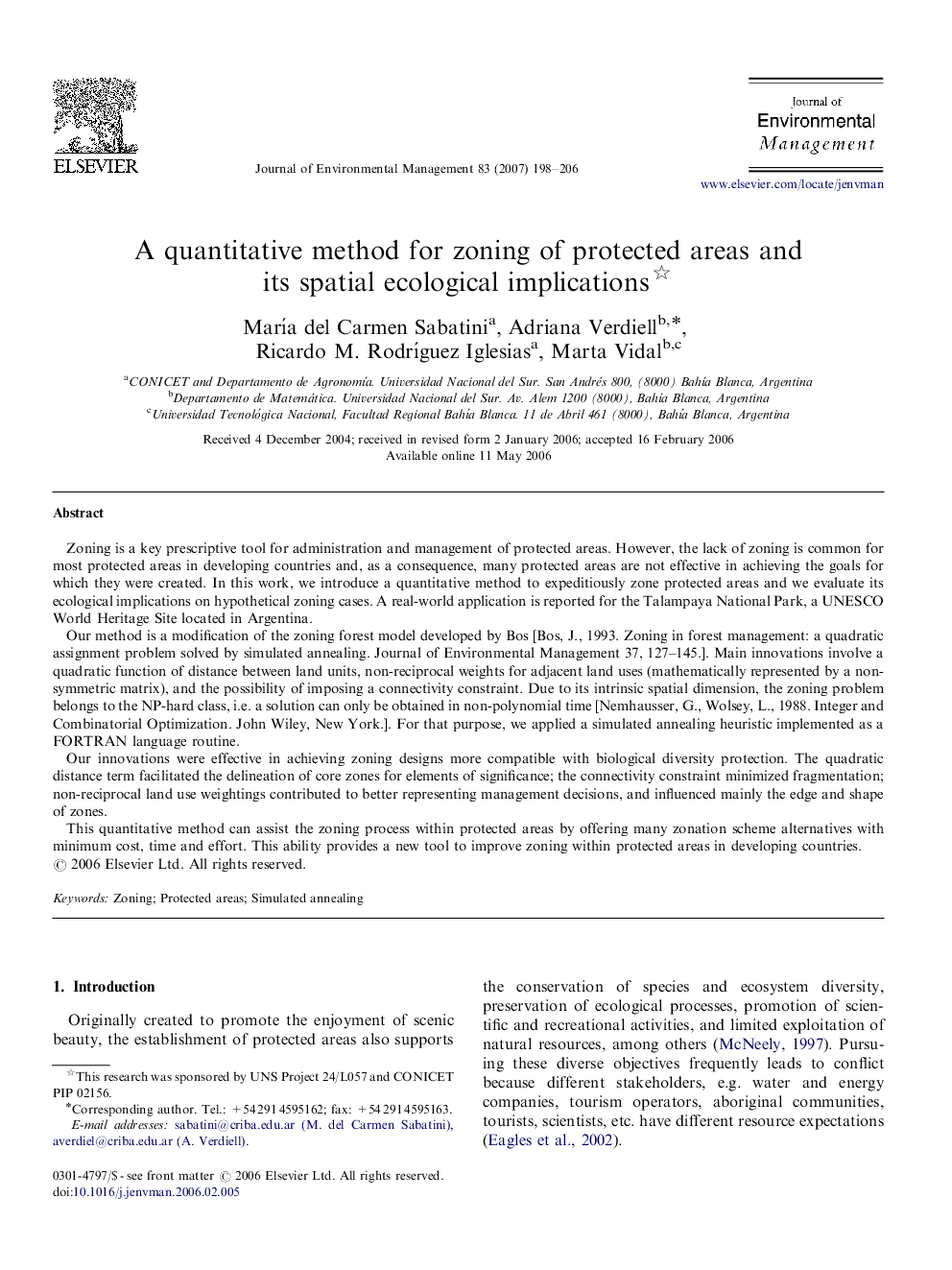| Article ID | Journal | Published Year | Pages | File Type |
|---|---|---|---|---|
| 1058769 | Journal of Environmental Management | 2007 | 9 Pages |
Zoning is a key prescriptive tool for administration and management of protected areas. However, the lack of zoning is common for most protected areas in developing countries and, as a consequence, many protected areas are not effective in achieving the goals for which they were created. In this work, we introduce a quantitative method to expeditiously zone protected areas and we evaluate its ecological implications on hypothetical zoning cases. A real-world application is reported for the Talampaya National Park, a UNESCO World Heritage Site located in Argentina.Our method is a modification of the zoning forest model developed by Bos [Bos, J., 1993. Zoning in forest management: a quadratic assignment problem solved by simulated annealing. Journal of Environmental Management 37, 127–145.]. Main innovations involve a quadratic function of distance between land units, non-reciprocal weights for adjacent land uses (mathematically represented by a non-symmetric matrix), and the possibility of imposing a connectivity constraint. Due to its intrinsic spatial dimension, the zoning problem belongs to the NP-hard class, i.e. a solution can only be obtained in non-polynomial time [Nemhausser, G., Wolsey, L., 1988. Integer and Combinatorial Optimization. John Wiley, New York.]. For that purpose, we applied a simulated annealing heuristic implemented as a FORTRAN language routine.Our innovations were effective in achieving zoning designs more compatible with biological diversity protection. The quadratic distance term facilitated the delineation of core zones for elements of significance; the connectivity constraint minimized fragmentation; non-reciprocal land use weightings contributed to better representing management decisions, and influenced mainly the edge and shape of zones.This quantitative method can assist the zoning process within protected areas by offering many zonation scheme alternatives with minimum cost, time and effort. This ability provides a new tool to improve zoning within protected areas in developing countries.
